 |
  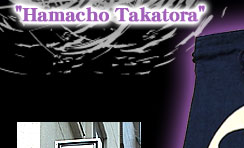 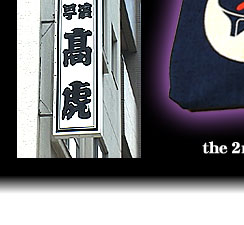 |
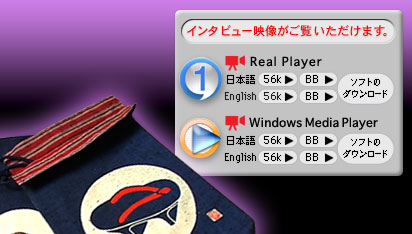 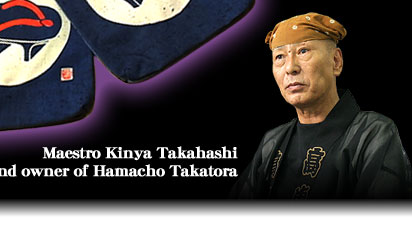 |
 |
The name of the town “Nihonbashi-hamacho” came from the fact that it used to face the shore along the Sumidagawa River. The mansions and storehouses of many clans rested along the river, and the area was known as a craftsmen's town during the Edo Period. Originally called “Kon-ya”, the shop “Hamacho Takatora” has been in business in Hamacho, Nihonbashi, since changing its name in 1948. This month, we interviewed Maestro Kinya Takahashi, the 2 nd owner of Hamacho Takatora. He manages the various processes of dyeing, keeping a stylish Edo sprit in his works which include “Hanten” - kimono style festival gowns, japanese washcloths, japanese pouches, and kakemori. |
 |
 |
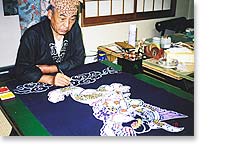 |
| The history of Hamacho Takatora |
 |
| Hamacho Takatora was established by my father in 1948, but our ancestors had another dye shop called “ Konya ” over the generations. So, I am only the 2 nd owner of this particular shop if I begin counting from my father who established it, but I would be the 6 th or 7 th owner if I start counting from when my family started the original shop. While the shop has a long history, I also believe in pursuing my own work style instead of always sticking to traditions. “ If your business is handed down over 3 generations, it's a shame.”is the expression that Edo natives use. This means that it's against the nature of Edo natives to keep a business totally within one's own family. Following this sentiment, I am trying not to limit myself to the tradition, and instead to hand down the business to disciples other than my own children. |
|
 |
 |
| The work of Somemoto the dye shop |
 |
Our work consists of managing processes and designs, making paper patterns, dyeing and finishing up products. We complete a piece of work and entrust a part of the rest of the process to other specialized craftspeople who work on these parts on their own. There were many craftspeople working with us before, but there are only a few left today. Now one craftsperson has to take care of several roles on their own. At our shop, we make and sell products, such as, “Hanten” - kimono style festival gowns, japanese washcloths, japanese pouches, kakemori and so on.
|
| Handing down the technique |
 |
It is quite tough to hand down the technique that we have kept for so long, since getting the same basic materials today is difficult. Dyestuff was switched from a natural one to a n acrylic one , and paper patterns were changed from paper to plastic ones. Although materials are subject to change, I am trying my best not to change the sprit of Edo natives, with its traditional techniques. For example, “Hanjimono” reflects cool Edo style and wit, a play on words. “Big sheep”, as it is literally written in Chinese characters is read ”beauty”. A pipe-smoking skull picture is “Honeyasume” ? resting one's bones, and another one with “Tama” - ball and “geta” ? Japanese wooden clogs is “Tamageta” ? surprise. These products were produced by the Edo craftsmen when the literacy rates were still low in Japan. Today, my wit is also reflected in my products.
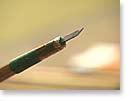 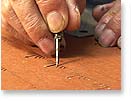 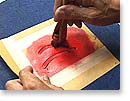
| 1. Select tools to match each designs |
|
2. Make paper patterns |
|
3. Dye Japanese pouches |
|
|
|
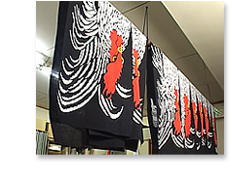
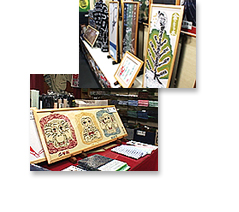
|
|
 |
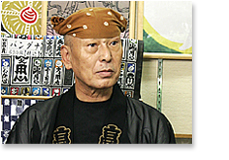 |
| The pain and joy of my work |
 |
| Again, it is quite tough to keep and hand down traditional techniques. However, I understand the purpose of my work. Simply because it's a joy to make my products, I can keep on making these items. If I only feel the pain, then it would not last long enough. I believe it is all up to oneself, to enjoy or to feel the pain in one's work. Also, when I design “hanten“ festival gowns, I try to join and learn the rhythm of the local festivals, to reflect it in my work. I also try to use Japanese pouches and kakemori I make before I sell them. Then, if I find anything wrong, I will make the modifications. I make traditional products, and add my own original modifications and changes every time I innovate something. I call this “field comes first” principle. |
|
 |
 |
| About Hamacho, Nihonbashi |
 |
Hamacho used to be famous as a town for craftsmen, but it was also known as a stylish town since Hanamachi was nearby. I feel I can capture the Edo sprit because I have been here. This particular atmosphere of the town itself is the source of my work and I can work easier. I would like to maintain my native Edo native spirit. This is my pride, to work in “Nihonbashi”, downtown Edo - Tokyo. That's why, if there's anything I can do for the neighborhood, I do my best for my town!
|
|
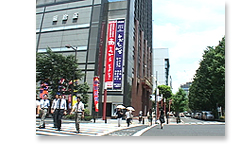 |
 |
 |
 |
 |
| |
 |
|
 |
Hamacho Takatora
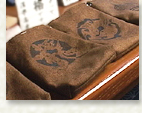 |
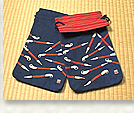 |
|
Kimono-style gowns
|
Japanese pouches
|
Japanese washcloths (800 yen〜), Japanese pouches (3500 yen〜), Kimono-style gowns (2000 yen〜); all items wonderful, spirited illustrations to make you want them all. If you'd like to order a Hanten, it's better to order 6 months i9n advance. Takatora products are also available at Nihonbashi Takashimaya department store and at shops in Nikko Edo Village. |
 |
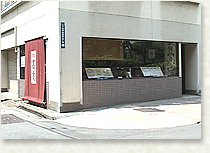
| Address |
: 2-45-6 Hamacho, Nihonbashi, Chuo-ku |
| Phone |
: 03-3666-5562 |
| Business hours |
: 9:00 〜 18:00 Closed on the 2nd Saturday,
Sundays and Holidays |
| Access |
: Hamacho station (Shinjuku line)
: Ningyocho station (Hibiya line or Asakusa line)
: Suitengu station (Hanzomon line) |
|
|
|
 |
 |
 |
|
 |
|
 |